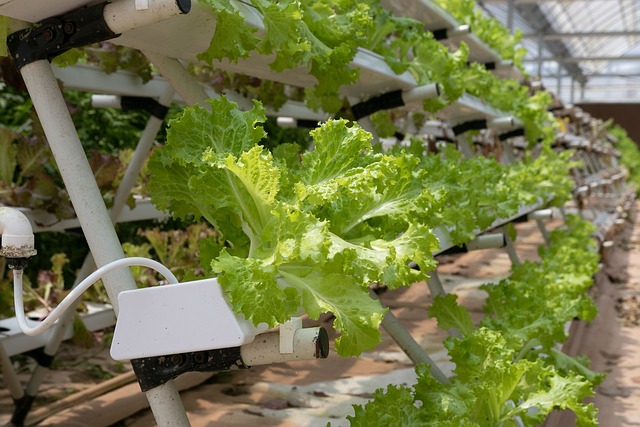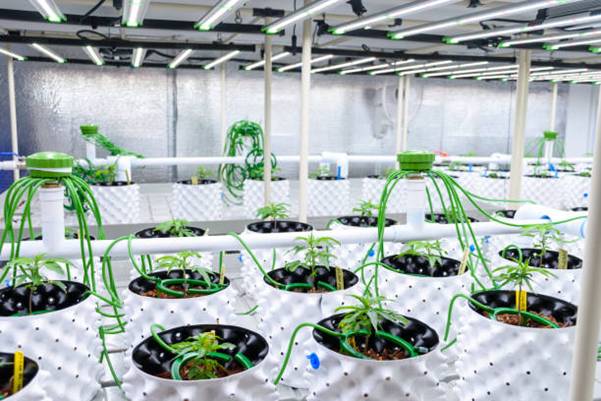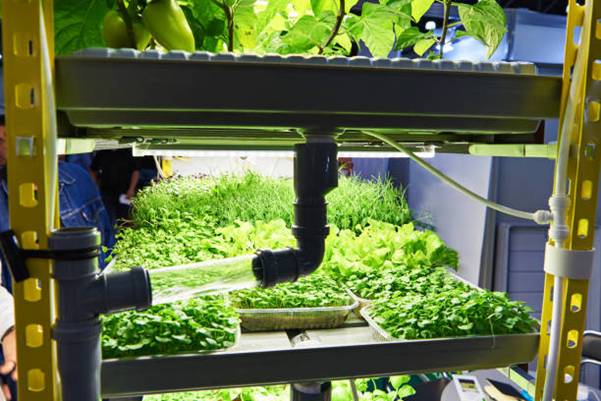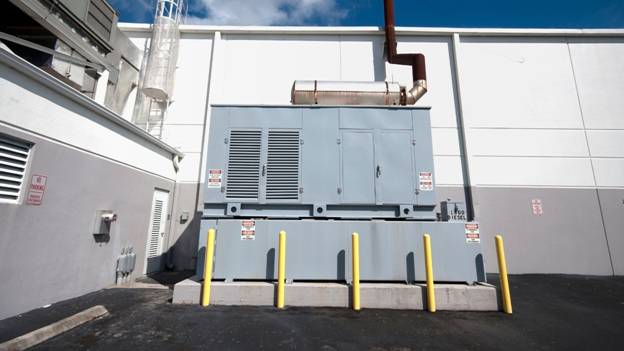Ebb and flow hydroponics – if you have been in the growing business for some time, you must have come across the term or probably come across it on the internet It’s a go-to for a reason: effective and high-performance, simple and efficient, and in many cases optimal. Also, its accessibility for automation procedures is rather high, which can greatly help minimize time spent.
In this article, you will learn how ebb and flow hydroponics systems work, why it is suitable for home-based and business-based plant growers, and how to make it automated for easier plant growing.
What is Ebb and Flow Hydroponics System?
The ebb and flow method follows the same basic principle of hydroponics. The plant’s roots get their nutrients from water that’s been pre-mixed with nutrients. The water is in contact with the roots of the plants, but unlike NFT or DWC, this contact is scheduled.
In an ebb-and-flow system, the plants can be placed on a tray or inside pots. Then, for a pre-scheduled time, the tray floods with nutrient solution, soaking the roots. After that, the water drains back into a reservoir. Rinse and repeat – flood and drain – ebb and flow, all different names to the same method.
How Does Ebb and Flow Work?
As long as you follow this flood -> drain -> flood -> drain continuous cycle, your method will be considered ebb and flow.
- Flood: The pump activates, pushing water from the reservoir into the grow tray, where your plants’ roots are.
- Drain: The pump switches off, allowing the water to drain back into the reservoir. This drainage exposes the roots to air, providing the oxygen they need. You can also drain its waste which is less sustainable.
- Cycle: This process cycles several times throughout the day, keeping a perfect balance between feeding and aerating the roots.
This flow works because it gives plants a perfect mix of water, nutrients, and oxygen, avoiding waterlogged roots, which can be a problem in other systems.
A Brief History of Ebb and Flow
The ebb and flow method goes back centuries—some say ancient civilizations like the Babylonians used similar techniques. It’s particularly popular for small-scale indoor growers, and for good reason—it’s efficient and easy to set up. Some say that this is the origin of the entire hydroponics method.
Different Types of Ebb and Flow Systems
There’s more than one way to build an ebb and flow system. Here are a few options to consider:
- Growace Scheduled Flood and Drain Systems: These systems come with timers to flood and drain at set intervals. Simple and effective.
- Autopot Mechanical Systems: A mechanical option that uses gravity-fed water and float valves, no pumps are required.
- Grow Tray Systems with Pump: A hybrid approach where the tray’s pump pushes water through the system, acting like an NFT/DWC combo. Water drains slowly, leaving just enough behind to keep roots moist between cycles.
3 Main Advantages of Ebb and Flow
Ebb and flow is popular for a reason—it offers some key benefits over other systems:
- Root Aeration: With the roots exposed to air between cycles, you avoid root rot and other water-related issues.
- Watering Automation: The pump operates on a timer, so it’s pretty foolproof. Once it’s set up, you don’t have to worry about manually feeding your plants.
- Less fails related to power outages: Even if the power cuts out, there’s always a little water left in the system to keep the roots from drying out, unlike systems like NFT that rely on constant water flow.
Automating Ebb and Flow Hydroponics
So we got into the main dish, how to automate the whole thing?
- Set Up Watering Timer: You’ll need a system with a timer to schedule when your tray floods and drains. This is a basic feature on most ebb and flow setups, but make sure yours has it.
- Add a Secondary Reservoir AKA Top-Off Tank: A second tank can hold pre-mixed nutrients, ready to refill the ebb and flow system when needed. This way, you won’t need to constantly check and top off.
- Install Float Valves: A float valve ensures the reservoir refills automatically, preventing you from manually refilling it.
- Add Growee: Here’s where things get easy. With Growee’s automation system, you can automatically monitor and adjust the pH and nutrient levels in your reservoir. Growee’s dosers balance your water perfectly, handling all the fine-tuning so you don’t have to. Set it up, and your system will automatically adjust pH and EC levels for optimal plant health.
With automation, growing becomes a whole lot easier. No more second-guessing. Healthier plants with way less effort means you’ve got more time to focus on the rest of your grow or even just kick back. The Growee system handles the nutrient dosing and pH adjustments for you, keeping your ebb and flow setup running smoothly. It’s simple, reliable, and pretty much foolproof—ideal for anyone wanting to streamline their hydroponics.
Wrapping It Up
Ebb and flow hydroponics is already a solid, low-maintenance setup, especially for small-scale growers. But throw in some automation, and you’ve got a game-changer. Why not give it a go? With the right tools, like Growee, and a bit of setup, you can sit back and let your plants thrive with minimal hassle.
FAQ
- What is an Ebb and Flow Hydroponic System?
An ebb and flow hydroponic system is a grow method where water floods a tray of plants, providing nutrients, then drains back into a reservoir. This cycle repeats, giving the roots both nutrients and oxygen. It’s a popular method due to its simplicity and effectiveness, making it ideal for automation.
- How can I automate an Ebb and Flow system?
To automate an ebb and flow system, use a timer to control the flood and drain cycles. Add a secondary reservoir with a float valve to refill the system automatically. Growee’s automation system can monitor and adjust pH and nutrient levels, creating a fully automated hydroponics setup.
- What are the advantages of automating an Ebb and Flow system with Growee?
Automating an ebb and flow system with Growee saves time and ensures consistent automated nutrient dosing and pH control. Growee adjusts your system automatically, reducing errors and leading to healthier plants. The system also runs reliably even during power outages, offering peace of mind.
- Why is Ebb and Flow hydroponics good for small-scale growers?
Ebb and flow hydroponics is great for small-scale growers because it’s space-efficient, cost-effective, and easy to set up. When automated with Growee, it requires minimal maintenance, allowing you to grow with less manual work while maintaining optimal conditions for your plants.
- Can Growee be used to automate nutrient dosing in my Ebb and Flow setup?
Yes, Growee automates nutrient dosing in an ebb-and-flow system. Growee monitors pH and EC levels in real time and adjusts them automatically, ensuring your plants receive the correct nutrient mix. This leads to better plant growth without the risk of manual errors.
- What are the different types of Ebb and Flow systems I can automate?
You can automate various types of ebb and flow systems, including Growace scheduled flood and drain systems, Autopot mechanical systems, and grow tray systems with pumps. Each can be fully automated using timers, float valves, and Growee’s nutrient and pH control technology.
- How does the Growee system improve Ebb and Flow hydroponics?
Growee improves ebb and flow hydroponics by automating nutrient dosing and pH control. By continuously monitoring your system’s water quality, Growee makes precise adjustments, keeping your plants in the optimal range for growth. This reduces manual labor and boosts plant health.
- How do I set up a top-off tank for my Ebb and Flow system?
To set up a top-off tank for an ebb and flow system, add a secondary reservoir with pre-mixed nutrients. Connect it to your main reservoir with a float valve for automatic refills. Use Growee’s system to automate pH and nutrient adjustments, ensuring a fully automated hydroponic setup.







